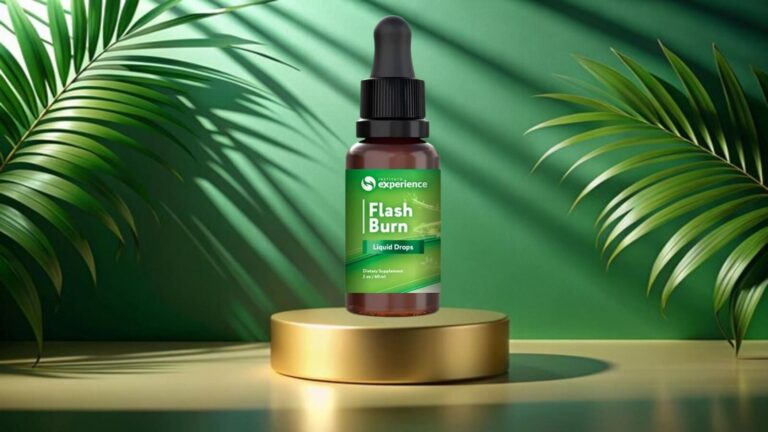
Going through menopause can be an uncomfortable and uncertain time for many women. As female hormone levels fluctuate dramatically, various unpleasant symptoms often appear – from hot flashes and night sweats, to mood swings, sleep issues, and more.
Understanding exactly what is happening with your hormones during this transition is key to finding the right solutions for relief.
This Female Hormone Levels Menopause guide will explore the details of menopause, perimenopause, the role of estrogen, progesterone and other hormones, as well as provide actionable tips on lifestyle changes and the best supplements to help you achieve hormonal balance.
What is Menopause and Why it Matters
Menopause marks the end of a woman’s menstrual cycles and fertility. It is diagnosed after 12 months without a period. The average age for menopause is 51, but it can occur anywhere from 40-55 due to factors like genetics, autoimmune disorders, chemotherapy, smoking, and more.
This major hormonal shift can pack an intense punch in terms of physical and emotional side effects. Supporting your changing hormone levels is crucial for feeling your best as you transition out of your reproductive years.
Understanding the details of this complex process is the first step to finding real solutions. That’s where a well-researched supplement like MenoRescue can make a big difference.

MenoRescue – Well Me.
Imagine how good it will feel to finally be rescued from the menopausal rollercoaster…
Support healthy hormone levels with MenoRescue™, formulated using the latest Ivy League research and backed by real-world results.
Menopause Overview Female Hormone Levels Menopause: Changing Hormone Levels
To understand why menopause symptoms occur, you need to understand how your hormones change. Here’s a quick look at the key highlights:
Estrogen
- Primary female sex hormone
- Peaks in the late 20s, declines with age
- Plummets during menopause, leading to symptoms
Progesterone
- Important for regulating menstrual cycle
- Works together with estrogen
- Drops significantly during perimenopause and menopause
Testosterone
- Yes, women need testosterone too!
- Gradual decline with age
- Loss exacerbates menopause symptoms like low libido
This changing hormonal mix directly impacts how you feel during menopause. Let’s explore some of the most common effects.
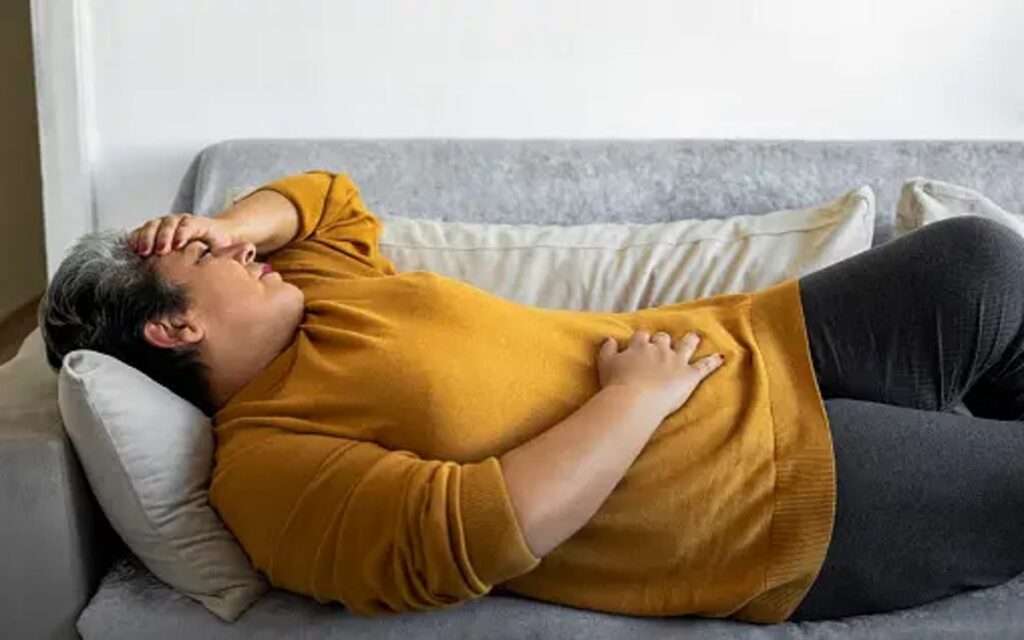
Menopausal Misery: Common Symptoms
Many women feel blindsided by the unexpected symptoms that can surface leading up to menopause (perimenopause) and beyond. Here are some of the most frequent complaints:
Hot Flashes and Night Sweats
Sporadic heat episodes impact 75% of menopausal women. Hot flashes can strike suddenly at any time, with intense sweating, flushing, chills and irritability. Night sweats often interrupt sleep as well. These frustrating symptoms are tied directly to declining estrogen.
Mood Changes like Irritability, Anxiety and Depression
The hormone rollercoaster does no favors for your emotional state. Many women report mood swings, stress, low motivation, even full blown anxiety or depression. For some, this can be the most challenging aspect of menopause.
Vaginal Dryness and Painful Intercourse
With less circulating estrogen, tissues in the vulva and vagina thin out and lose elasticity. This leads to irritation, dryness, inflammation, stinging, pain, and bleeding during sex. Over half of postmenopausal women experience this.
Memory Lapses and Brain Fog
You know that feeling when words or thoughts just disappear before you can grasp them? Menopause brain fog and memory issues are common with fluctuating hormones, sleep disruption, stress and more.
Weight Gain and Metabolic Changes
Despite healthy eating and exercise habits, many women gain weight during menopause – especially around the abdomen. Shifting hormones signal the body to store more fat as fertility declines. Lean muscle mass also diminishes.
Sleep Disturbances like Insomnia
Between night sweats waking you up, anxiety running through your mind, and hormonal shifts throwing off circadian rhythms, getting enough high quality sleep can be a distant dream during menopause. Poor sleep exacerbates all other symptoms too.
Dealing with these unwanted symptoms while simply trying to work and live your daily life can be incredibly frustrating. But you don’t have to just suffer through menopause. Let’s talk solutions!
Perimenopause – Navigating the Transition
First, it’s important to understand perimenopause – the 2-10 year transition phase leading up to official menopause. This is when estrogen levels fluctuate most drastically.
Many women actually start experiencing symptoms well before their periods stop due to the hormone rollercoaster. Irregular cycles are the hallmark sign. You may go months with no period, then have one – or even heavy flooding.
Hot flashes, night sweats, sleep issues, and mood instability often appear during perimenopause too. It is absolutely crucial during this period to start focusing on solutions to ease the transition towards menopause.

Key Takeaway – Help for Perimenopause:
Supporting your changing hormone levels should begin in perimenopause before much more severe menopause symptoms take hold. MenoRescue ingredients like soy isoflavones and black cohosh act as natural estrogen regulators to relieve symptoms like hot flashes.
Understanding just how dramatically estrogen levels change explains why women go through so much upheaval. Now let’s focus specifically on each key hormone and its role.
Hormones and Menopause – Estrogen, Progesterone, Testosterone
To find solutions during menopause and perimenopause, you need to understand exactly how your hormones are impacting you. While dozens of hormones shift during this transition, three are most responsible for symptoms:
Estrogen Loss – The Culprit Behind Hot Flashes & More
Out of all the menopause hormone changes, plummeting estrogen arguably creates the most chaos. As ovulation ceases, so does much of your body’s estrogen supply.
Estrogen comes in three main forms – estradiol, estriol and estrone. Estradiol is the strongest, dropping significantly during menopause. Weaker estriol and estrone still circulate but often can’t prevent symptoms.
This estrogen free fall is directly linked to issues like:
- Hot flashes and night sweats
- Vaginal dryness and discomfort
- Urinary tract infections
- Mood swings and irritability
- Anxiety or depression
- Sleep disruption
- Heart palpitations
- Headaches and migraines
- Weight gain
- Brain fog and memory issues
Clearly supporting waning estrogen levels is imperative for minimizing menopause misery!
It’s all about Estrogen Equilibrium: Declining estrogen doesn’t automatically doom you to suffering. The key is maintaining balance as levels shift – not too high, not too low. This is what MenoRescue’s formula aims to help women achieve for steady relief.
Now let’s explore progesterone, often called “the other woman hormone”…
Progesterone Decline Exacerbates Imbalance
You’ve likely heard about estrogen dominance. Part of the problem is progesterone levels also drop significantly during perimenopause and beyond.
This near complete loss of progesterone combined with wildly fluctuating estrogen triggers more noticeable symptoms. Together they regulate your menstrual cycle and impact everything from fertility to mood to metabolism.
Imbalances between estrogen and progesterone are the real culprit. You need both in balance. Declining progesterone throws off that equilibrium – even more than low estrogen alone.
Symptoms impacted by progesterone imbalance include:
- Weight gain
- Anxiety and mood swings
- Sleep quality issues
- Low bone density
- Headaches
Key Takeaway – Supporting gentle progesterone relief in balance with estrogen alleviates side effects through hormone harmony. This is why MenoRescue contains wild yam. Read about the stellar benefits of this powerful progesterone booster.

MenoRescue – Well Me.
Imagine how good it will feel to finally be rescued from the menopausal rollercoaster…
Support healthy hormone levels with MenoRescue™, formulated using the latest Ivy League research and backed by real-world results.
Now let’s move on to the third hormone in this menopausal trifecta – testosterone.
Testosterone Levels Impact Energy, Mood and Libido
While not often discussed, testosterone plays a vital role in women’s health. Levels peak around age 25 then gradually decline. Loss of testosterone during menopause exacerbates many symptoms.
Benefits of Testosterone in Females:
- Regulates sex drive and arousal
- Boosts energy, ambition, and stamina
- Stabilizes moods
- Builds lean muscle mass
That explains why irritability, low motivation, lackluster libido, weight gain, fatigue and mood instability also accompany testosterone.

MenoRescue for Menopause: Clinically Proven Results
With a more thorough understanding of the menopausal transition, what hormone therapies have proven most effective for relief? Let’s analyze the supplement options.
Of all the menopause relief products on the market, MenoRescue stands out as the premier formula for effectively easing unwanted symptoms through hormone harmony and balance.
MenoRescue Key Ingredients Target Symptoms
Backed by 25 years of clinical research, this carefully balanced blend of botanicals, vitamins, minerals and whole-food extracts helps align your fluctuating estrogen, progesterone, testosterone and cortisol for overall wellbeing.
Let’s analyze the top five MenoRescue ingredients scientifically shown to safely provide menopausal relief:
Black Cohosh
Widely used for hot flashes and night sweats with numerous studies confirming its estrogen-regulating relief for these notoriously hard-to-treat symptoms.
Soy Isoflavones
The gold standard extensively shown to gently boost declining estrogen levels while supporting heart and bone health. Isoflavones like genistein and daidzein specifically bind to estrogen receptors.
Wild Yam
Long used in herbal medicine as a natural progesterone booster for PMS and menopause. Restores hormone harmony. Also enhances mood.
B-Vitamins (B6, B12, Folate)
Critical for metabolic and nervous system health, B-vitamins directly relieve stress through proper adrenal gland function and neurotransmitter balance – key for moods.
Magnolia Bark
An ancient Chinese remedy for anxiousness, irritability, depression and gastrointestinal issues resulting from stress. Eases cortisol imbalance.
Combined in optimal ratios with other vitamins, minerals, and superfoods like Rhodiola Rosea, BioResponse DIM and green tea, this stand-out formula promotes long term hormonal balance naturally with none of the risks of synthetic hormone replacement.
Lifestyle Tips for Natural Hormone Balance
While supplementation is hugely helpful for aligning hormones, lifestyle practices also play an enormous role. Here are pro tips for better managing menopause through nutrition, stress-relief, fitness and more.
1. Choose Hormone-Healthy Foods
What you eat helps determine how you feel. Certain foods influence estrogen and other hormones. Focus your diet on:
- Phytoestrogen-rich foods: flaxseeds, soy, oats, sesame seeds, apples
- Essential fatty acid foods: salmon, avocado, olive oil, walnuts
- Nourishing grains, vegetables, fruits for fiber
- Minimizing: processed foods, sugars, excess carbs and alcohol
2. Find Stress Relief Every Day
Unmanaged emotional stress chronically elevates cortisol – your “fight or flight” hormone. This chemical rollercoaster then exacerbates menopausal symptoms by throwing other hormones off balance.
Practice mind-body therapies like yoga, meditation, deep breathing, massage and mindfulness to lower cortisol and relax the nervous system. Even just unplugging from screens several hours before bed can help tremendously.
3. Stay Active with Regular Exercise
Moving your body most days maintains healthy estrogen receptor sites, boosts mood-lifting endorphins, supports heart health, keeps blood sugar stable, promotes better sleep and maintains lean muscle mass.
Aim for a mix of muscle-strengthening resistance training along with cardio/aerobic activity totaling 150 minutes per week. Walking, swimming, gentle yoga and pilates are all great options.
4. Get Plenty of Sleep
Easier said than done when menopause triggers insomnia, right? Still, prioritizing sufficient, uninterrupted sleep allows hormones and metabolism to reset. Without it you’ll just exacerbate moodiness, trouble focusing, low motivation and more symptoms.
Ideal sleep best practices:
- Unwind 1-2 hours pre-bed away from screens/stimulation
- Create an optimal sleep environment – cool, very dark room
- Leverage white noise/blackout curtains if needed
- Keep a regular bed/wake cycle – even weekends
- Nap strategically if needed (limit to 20-30 minutes)
See “Get Relief from Menopause Sleep Issues” tips from menopause experts for more specifics on defeating insomnia.
The right lifestyle adjustments tailored to your needs make a significant impact. Now let’s explore some other options healthcare providers often recommend.
Weighing Mainstream Medical Menopause Treatments
If you’re suffering through menopause, chances are you’ve heard about or explored medication and even surgical options. What are the pros and cons of conventional medical menopause therapies?
Hormone Replacement Therapy
Also called HRT, doctors often default to prescribing estrogen or progesterone pills and creams to replenish hormonal decline. While effective for some, HRT risks and side effects include blood clots, breast cancer, heart disease and stroke.
Benefits are often short-lived with symptoms returning once discontinuing. Many women react negatively or simply prefer more natural options.
Antidepressants
Medications like SSRIs or SNRIs may temporarily improve mood, insomnia, anxiety or IBS triggered by menopause. They do not address underlying hormonal imbalance and side effects like weight gain, fatigue and sexual dysfunction are common.
Birth Control Pills
Some doctors prescribe low-dose birth control pills to regulate erratic perimenopausal menstrual cycles. However, this just masks transition symptoms leading up to menopause rather than addressing the root hormonal imbalance.
Vaginal Estrogen
Topical estrogen creams, tablets or rings treat vaginal dryness and discomfort associated with menopause. This minimizes systemic estrogen exposure compared to oral dosing. However, moderate side effects still exist.
Natural Progesterone Creams
Applied directly to the skin or internally, over-the-counter progesterone creams claim to boost levels for mood and sleep issues without systemic effects of oral dosing. However absorption is highly variable and creams rarely deliver consistent results.
As you can see, each medical menopause treatment comes with pros and cons. Lifestyle adjustments combined with natural supplements like MenoRescue provide similar benefits without concerning side effects.
Now let’s explore what makes MenoRescue such an ideal option…
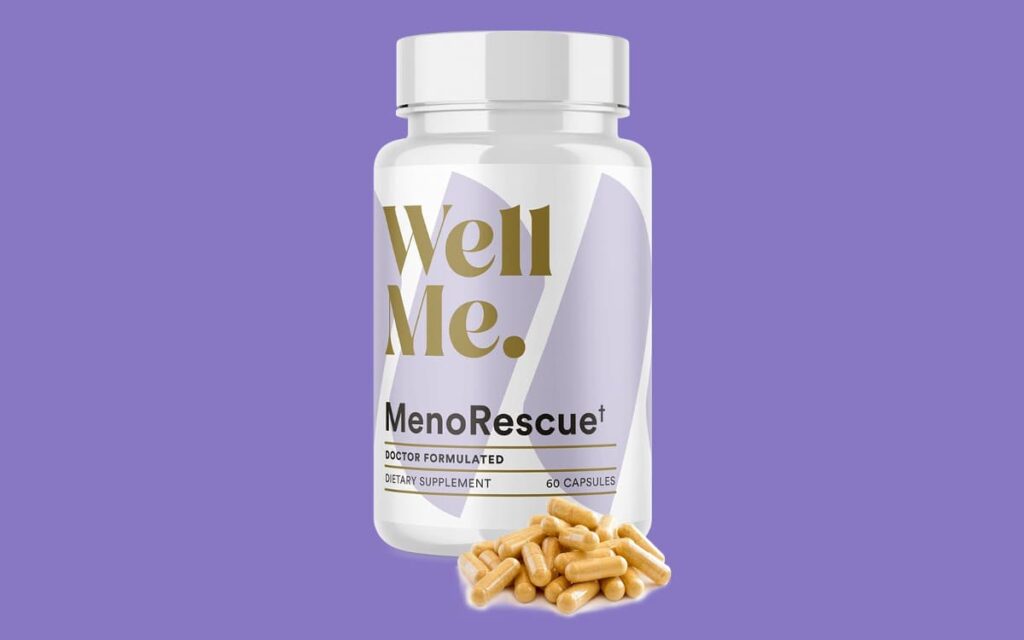
Targeted Relief – How MenoRescue is the All-in-One Solution
MenoRescue stands out far and away as the most comprehensive menopause symptom relief formula available today – without any concerning side effects. Here’s a recap why:
1. Multi-Symptom Relief – MenoRescue simultaneously tackles ALL major menopause complaints from hot flashes and night sweats to mood swings, vaginal dryness, insomnia, weight gain, fatigue and more through gentle hormonal balance instead of megadosing estrogen alone.
2. Broad Hormone Support – Ingredients like soy isoflavones and black cohosh regulate estrogen while wild yam restores progesterone balance. Adaptogens Rhodiola Rosea and ashwagandha also optimize cortisol for steady energy and calm. Other key vitamins and botanicals support thyroid health, metabolism and much more.
3. Safe, Side Effect-Free Formula – No hormones are actually added. Herbal regulators align your body’s own estrogen, progesterone and cortisol for comfort and safety. Plus it’s made in the USA adhering to stringent quality standards.
4. Rave Customer Reviews – With a near 5-star average rating over 29,000 Amazon reviews, MenoRescue users can’t say enough about finally finding relief from debilitating menopause symptoms. Most experience benefits quickly and consistently without concerns of side effects. Many say it gave them their “life back!”
Your Menopause Questions Answered
Now that you understand the details of menopause and changing hormone levels, let’s recap answers to the most frequently asked questions:
When does menopause typically occur?
Most women reach menopause between the ages of 45-55, with 51 being the average. It is diagnosed after 12 months consecutive without a period. Perimenopause can begin up to 10 years prior.
What are the most common signs of menopause at 50?
Irregular periods, hot flashes, night sweats, trouble sleeping, weight gain, loss of libido, irritability, anxiety, fatigue, vaginal dryness, urinary urgency and mental fog commonly start in the late 40s as perimenopause begins shifting into menopause.
How effective is MenoRescue for relieving hot flashes and night sweats?
Multiple studies confirm the estrogen-regulating power of ingredients like black cohosh and soy isoflavones for significantly reducing hot flash frequency
Are there any side effects associated with taking MenoRescue?
There are no reported side effects associated with MenoRescue capsules when taken as directed. Its hormone-free formula contains only natural vitamins, minerals, herbs and botanicals that gently align your own estrogen, progesterone and cortisol for balance and comfort.
Can supplements really help manage perimenopause symptoms?
Absolutely! Starting a supplement like MenoRescue during the perimenopausal transition optimizes relief by supporting fluctuating hormones before more disruptive menopause symptoms take hold.
What lifestyle changes complement using MenoRescue for better menopause relief?
Regular exercise, a hormone-friendly diet, stress management practices like meditation and yoga, proper sleep habits and quitting smoking all help balance hormones for reducing menopause symptoms.

MenoRescue – Well Me.
Imagine how good it will feel to finally be rescued from the menopausal rollercoaster…
Support healthy hormone levels with MenoRescue™, formulated using the latest Ivy League research and backed by real-world results.
Conclusion – Female Hormone Levels Menopause: There is Hope for Menopause Relief
Going through menopause is challenging on many fronts. By learning what to expect hormonally and how to best support your body’s transition, you’ll minimize frustrating symptoms. Relief and balance is absolutely possible!
While lifestyle adjustments like a balanced diet, regular exercise, adequate sleep and stress management techniques all contribute to comfort, adding a high quality supplement makes a significant difference for maintaining hormone equilibrium.
Of all the menopause relief products available, MenoRescue Pro stands far above other options for its multidimensional, side effect-free support. Formulated by hormone experts specifically to address the most troublesome menopause complaints, women overwhelmingly report life-changing results.
Don’t despair or assume you just have to grit your teeth to the menopausal finish line! Treat your body compassionately. Learn more and consider giving MenoRescue a try today. Chances are you’ll be so glad you did!
FAQs on Female Hormone Levels Menopause – Addressing Common Concerns
Clearing the Fog
Let’s tackle the burning questions, dispelling uncertainties and providing clarity on the often mystifying world of menopause.
1. When does menopause typically occur?
Menopause usually occurs around the age of 51, but individual variations are common. Factors such as genetics, lifestyle, and overall health play a role.
2. What are the signs of menopause at 50?
Signs include irregular periods, hot flashes, mood swings, and changes in sleep patterns. Seeking medical advice is essential for an accurate diagnosis.
3. How effective is MenoRescue for hot flashes and night sweats?
MenoRescue’s effectiveness varies among individuals, but many users report significant relief from hot flashes and night sweats. Results may be influenced by factors like dosage and consistency.
4. Are there any side effects associated with MenoRescue?
While generally well-tolerated, individual responses may vary. Common side effects include mild digestive discomfort. Consultation with a healthcare professional is advised.
5. Can supplements really help with perimenopause symptoms?
Supplements, including MenoRescue, may help manage perimenopausal symptoms. However, results can differ, and consulting with a healthcare provider is recommended.
6. What lifestyle changes can complement MenoRescue for better results?
A balanced diet, regular exercise, stress management, and adequate sleep can complement MenoRescue, enhancing overall well-being during menopause.
References
Here are additional reference article links related to menopause and female hormone levels that could be cited or linked to in the blog post for supporting information:
- https://www.acog.org/womens-health/faqs/menopause This is an overview about menopause from the American College of Obstetricians and Gynecologists, providing authoritative definitions and details.
- https://www.ncbi.nlm.nih.gov/pmc/articles/PMC4890704/ This is a research review paper from the National Center for Biotechnology Information exploring the impact of hormone changes during menopause on symptoms like hot flashes.
- https://www.menopause.org/for-women/menopauseflashes/menopause-symptoms-and-treatments This is a patient resource from The North American Menopause Society going in depth on the most common menopausal symptoms and both lifestyle and medical treatment options.


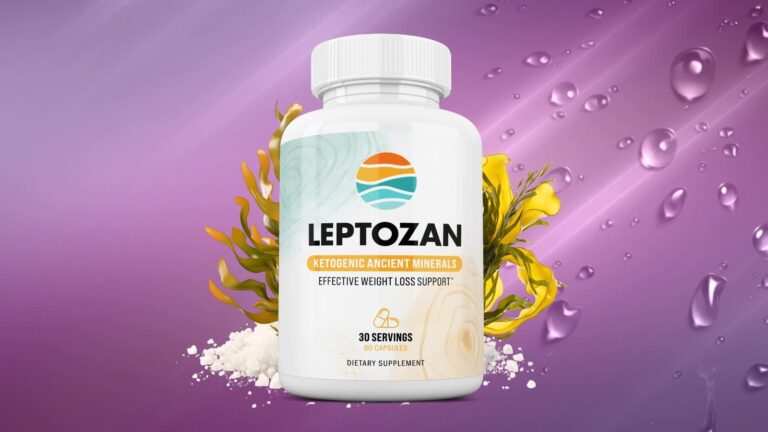
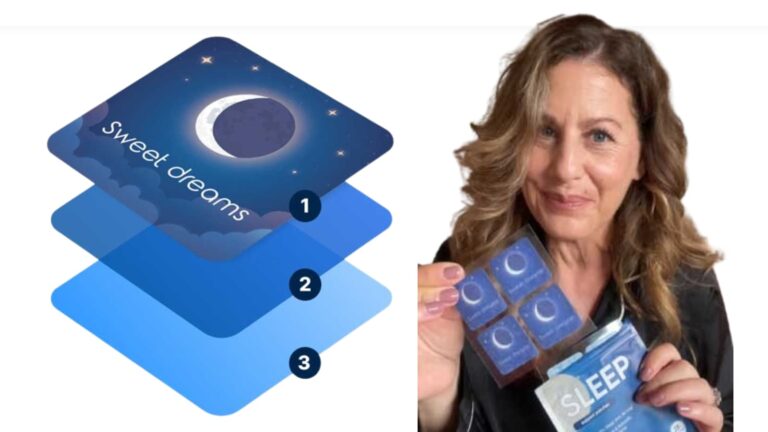

![Struggling With Sleepless Nights? This Patch Works in 30 Minutes—Guaranteed 23 I Cant Sleep What Do I Do? ] Wacth This Video] Sleep Secret](https://healthfactsjournal.com/wp-content/uploads/2025/04/i-cant-sleep-what-do-i-do-768x480.jpg)


